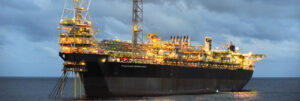Special topics

There are five stages in the exploration and production ‘lifecycle’. These stages step through how hydrocarbons are discovered to what happens after an oil or gas field is decommissioned. Each stage is described below in terms of the activities, jobs, cost and time involved. There are also risks at every stage, which need to be managed responsibly by oil and gas companies.
Oil and gas exploration is a method used by petroleum geologists and geophysicists for searching for hydrocarbon deposits (oil and gas) under the Earth’s surface. It consists of locating oil and gas reserves using primary technologies particularly seismic surveys and drilling wells. Exploration is a costly , risky operation because the expenditure associated are usually valued at millions of dollars and every two out of three wells, on average, contain no traces of hydrocarbons. It therefore require companies to drill many wells in one area before they are able to find an oil or gas discovery, and this may take decades or more years.. Some explorers sometimes find nothing at all after the exploration exercise. .
During exploration drilling, vital information and samples are collected about the rocks and fluids (water, gas and oil) encountered by the well in order to find out:
The appraisal stage becomes successful if a company makes the decision that the oil or gas field can be developed. One risk that are faced by companies is that, even after investing time and money in the appraisal stage, their ability to develop the field based on safety precautions is another problem especially with reference to communities and the environment
After a company is successful with their exploration drilling and make an oil or gas discovery, then the appraisal phase of the lifecycle is next. The main purpose of this phase is to reduce the uncertainty or possibility of losses about the size of the oil or gas field and its properties. During appraisal, more wells are drilled in addition to the exploration wells to collect more information and samples from the reservoir. Another seismic survey is repeated to get a better image of the reservoir.. These activities takes several more years and cost tens to hundreds of millions of dollars. More seismic surveys and wells assists petroleum geologists, geophysicists and reservoir engineers comprehend the reservoir better. For example, they try to find out whether rock or fluid properties change away from the discovery well, how much oil or gas might be in the reservoir, and how fast oil or gas will move through the reservoir. After the success of the appraisal stage, it is successful if a company decides that the oil or gas field can be developed.
3. Development
The development stage occurs after successful appraisal and before full-scale production. The main activities (and people involved) are:
Completing the development plan involves drilling engineers who drill the first phase of production wells and project engineers who assists in building the planned facilities. A lot of employment opportunities are created and people can be involved in building production facilities, and safety is a top priority. The risk of accidents is highest in this phase because of the number of people involved at construction sites.
The development of oil field sometimes cost hundreds of billion and it typically last for 5-10 years to develop an oil or a gas field,, depending on the location, size and complexity of the facilities, and the number of wells needed. Onshore developments are comparatively much cheaper than offshore developments.
Oil and gas companies makes rational expectations with cost and benefit analysis before undertaking a project on exploration, , appraisal and development costs, as well as profit from selling the hydrocarbons. Even more importantly, developments will only happen if the communities or ecosystems affected can be protected
Production in the oil and gas industry is the last but one phase during which hydrocarbons are extracted from an oil or gas field and then first money (or revenue) comes from selling the oil or gas. , When the revenue exceeds the company’s initial investment and cost, then they begin to make a profit. Production in an oil field can last several years up to 40 years, depending on the size of the oil or gas field and how expensive it is to keep the wells and production facilities running. Each year millions of dollars are spent on operating and maintaining the field. Safe production operations is critical, otherwise companies risk harming people or the damaging the environment, example, through an oil spillage, or explosion.
Operators work in shifts to keep production going. Engineers are usually located full-time at the production facilities in order to operate and maintain the productive activities. Reservoir engineers frequently check on the health and performance of the field to plan how best to maintain production. Additional wells might need to be drilled or the production facilities improved to maximize exploration of the oil or gas.
Decommissioning is the term used to describe the removing of production facilities and restoring oil and gas sites that are no longer profitable. The term is usually used to refer to offshore facilities. Offshore oil and gas platforms can be vast structures requiring large amounts of materials in their construction. By bringing the facilities onshore for dismantling and disposal, these materials can be reclaimed.
In conclusion, the exploration and production life cycle of an oil field passes through various stages and each stage requires financial and technical commitment to realize the full potential of these projects for development.
By: David Aduhene Tanoh-www.reportingoilandgas.com